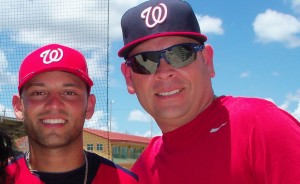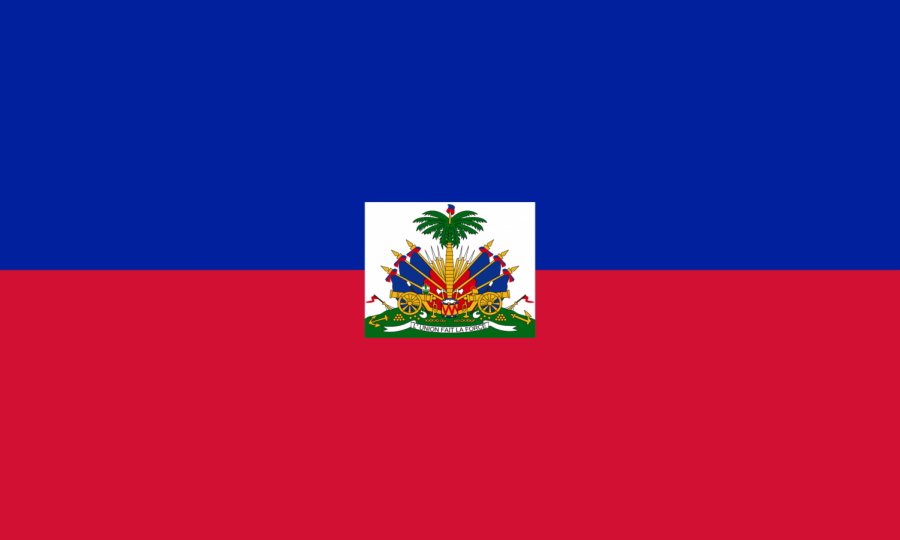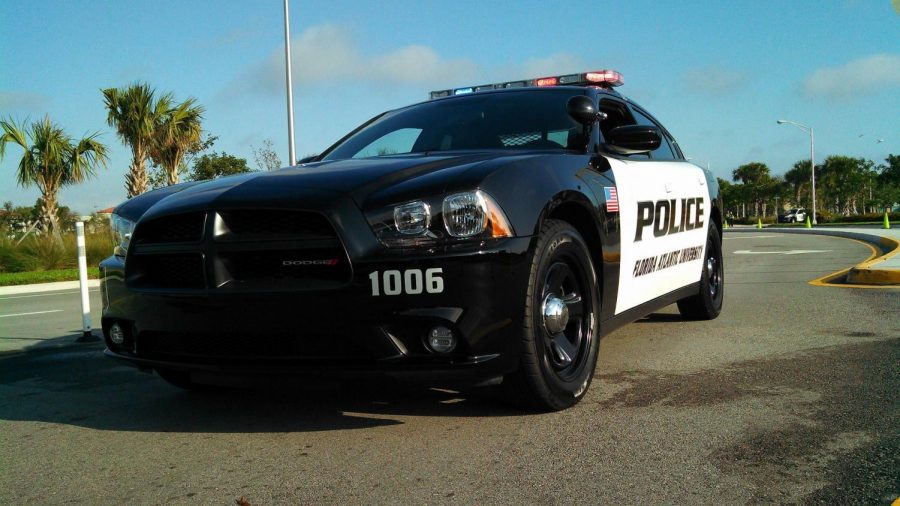
It could have been worse. Much worse.
That’s the immediate conclusion I reached after reading on Baseball America that former Owls second baseman/catcher Mike Albaladejo was suspended by Major League Baseball for using a stimulant with a name (methylhexaneamine) almost as long as his ban (50 games).
It could have been steroids or HGH (human growth hormone) or any performance enhancing drug that seems to be the rage in the big leagues these days. The Associated Press reports that in-season HGH testing could start as early as next season for the MLB.
The stimulant, Jack3d, the same one Albaladejo showed me in the locker room one day during last season, is a pre-workout supplement he picked up at GNC.
That’s not to marginalize the blunder he made. Fifty games, no matter the reason, is still a significant loss of playing time. Albaladejo (signed by the Washington Nationals) is back in town, working out on campus trying to fight through the setback. He pauses for a couple seconds and explains the situation.
“It was shocking to me when I found out because I don’t take any performance enhancing drugs. It was more of an excessive amount of caffeine,” he said. “When people hear you’re out for 50 games, they’re quick to think it’s steroids or HGH.”
The reaction

That’s exactly what his father suspected when he first heard the news.
“The first thing people think about when they read something like this is steroids,” Neftali Albaladejo said. “And I can’t blame them, because when he told me, that’s the first thing that came to my mind with all the crap that’s going on, on TV with the MLB players.”
Neftali is a former standout high school baseball player in Connecticut, but he’s a dad first, and with that came understandable shame.
“At first, as a father, I was disappointed. It was upsetting,” he said. “But I was relieved it wasn’t something that was illegal or steroids or anything like that.”
Albaladejo was sad to let his family down (his father told me they received a lot of phone calls from family and friends about the incident), but was quick to point out he wasn’t trying to cheat the system.
“I was never taking either one of those,” Albaladejo said of steroids or HGH. “I was never taking anything to enhance my performance.”
Mr. Versatility
At FAU, his performance didn’t require enhancement. He may be only 5-foot-7, but Albaladejo was the leader of the team, the voice and glue of two-time conference champions. He switched from his natural position of catcher to second base without complaint, helping the Owls capture the regular season conference title in 2012.
His teammates were in total disbelief when they heard the news.
“You don’t expect that ever. I know he’s already a little bummed, but I’m always here for Mike,” close friend and former teammate Alex Hudak said. “Hopefully when he comes back from suspension he’ll be the same player and get better from it.”
“I heard all it had in it was the equivalent to drinking a bunch of coffee. I was surprised,” R.J. Alvarez said. “I didn’t expect anything like that. When I heard about it I was like ‘oh man.’”
What is methyllexaneamine?
According to the Resource Exchange Center, “Methylhexaneamine is a weak stimulant that was first trademarked under the name ‘Forthane’ by Eli Lilly in April of 1971 as a nasal decongestant. The trademark has long expired, but Methylhexaneamine has continued to grow in popularity over the years.”
The site lists Jack3d as the most popular methylhexaneamine product on the market. The amount of caffeine is what caused the positive score.
“Which is the same thing if I were to drink an energy drink before a drug test and you would fail,” Albaladejo explained. “Before I was signed, you were allowed to take it in college.”
Redemption
Professional sports are all about survival, sometimes at any cost. When you’re 5-foot- 7, 170 pounds, gaining an unfair competitive advantage against men much larger would be a tempting thing to do. Albaladejo has always battled the odds of stature, but this is a man who made an honest mistake and will grow from it.
“I take it as a learning experience from here on out and move forward. I have support from my family and friends,” Albaladejo said. “They know the type of ballplayer that I am, that I work hard.”

John McCormack, his former coach at FAU, says he’s already spoken to Albaladejo multiple times since the incident.
“He knows what he has to do and the Nationals told him to come back when your suspension is over,” McCormack said.
McCormack says this is the first time any of his players have been suspended by the majors in his three years as FAU’s coach, but he’s quick to mention Albaladejo accomplished something special for a man of his size.
“There’s a lot of guys that play college baseball that are too short or don’t throw hard enough that the pro guys don’t give an opportunity to,” McCormack said. “I was happy Mike did. There are guys that go through life and never get that opportunity but Mike did.”
The transition
From the increase in game speed, to big leaguers coming down to buy him and his teammates lunch, Albaladejo says life on the road as a minor leaguer is nothing like he expected. It’s something so awe-inspiring, he says you have to find out first-hand for yourself.
“You don’t really know how it is until you actually experience it,” Albaladejo said. “At first it was a little bit of a culture shock. The game is a little bit faster.”
And his college pals are on separate sides of the country, from Burlington to Boca. Making friends isn’t hard for a public communications major, though — especially not a bilingual one.
“I’m cool with everybody. It’s a little different from college. You still play for a team, but not as much as in college. There’s a lot of Dominicans and Spanish guys,” Albaladejo said of the clubhouse. “The only difference is there’s a big language barrier with Spanish and English. But for me, I’m in the middle, I speak both languages, so I mix well with everybody.”
The road ahead
As for now, all Albaladejo can do is serve his suspension and prepare for next season’s spring training. He’s wasting no time with his plan to come back stronger.
“Get in the weight room. That’s what I’m doing,” Albaladejo said of his offseason curriculum. “Training, speed training and playing baseball is basically what I’m going to be doing this whole time. This offseason I’m going to try to gain some weight, healthy weight, and get on an eating program that the strength coach from the Nationals sent us.”
If Albaladejo should take anything from this temporary vacation from baseball, it’s that he has to be extremely careful with what he puts in his body. This isn’t a seasoned veteran who’ll get numerous chances to redeem himself. This is a rookie minor leaguer scratching and clawing to get called up.
Albaladejo needs to continue to work for the goal he’s always had since he first laced up his cleats. Getting signed by the Nationals after three long weeks of waiting and sharing an emotional moment with his dad is nice, but there’s no reason the two can’t embrace for the ultimate dream — Mike Albaladejo, starting big league catcher.
“It felt great. All my life I’ve always had to overcome adversity. A lot of people saying you can’t do this, you can’t do that, just because of your height,” Albaladejo said. “It felt great to think they said I couldn’t go D-1, I went D-1. I couldn’t be a starter, but I was. You can’t play pro ball, but I just got signed. It felt great to quiet all the haters.”
Don’t stop now, Mike.








Chuck • Sep 25, 2012 at 9:14 pm
The theme of the article is basically that Methylhexaneamine is a non-harmful substance/weak stimulant. Well, in my opinion, here are some not so weak facts. Methylhexaneamine is banned by the World Anti-Doping Agency who lists it as a performance enhancing substance as a result of several high profile positive tests for this highly controversial drug. The listed possible side effects include headache, nausea, and stroke. The US military recalled all military products containing methlyhexaneamine after it was found in the blood of two soldiers who had fatal heart attacks in 2010. EIGHT MILB players have been suspended for methlyhexaneamine in 2012 alone (that’s alot of mistakes, isn’t it? and it only covers those caught, not those who are using). Based on the above information, is it worth taking this drug unless needed for a medical condition? If taking methylhexaneamine is “no big deal” (my interpretation of the theme of the article), then why is it also a banned drug under the MLB drug prevention program? What concerns me is NO ONE ever seems to verbalize any concern whatsoever for the long term health of the users? The article does not state whether or not Albaladejo used this drug while playing at FAU. What are the enforced testing policies at FAU? Are there any? How often are the players tested? What are they teste for?
Finally, every time someone gets caught using a banned substance, I can’t stop to think of all the players, at all levels, who have never violated any banned drug policy but whose playing time was substantially diminished not based on having lesser talent, but based upon only upon not having taken the banned substances. The media now refers to the steroids era in past terms (a general statement not referring to Albaladejo, but to the true moral tate of the game). However, the long list of MILB drug suspensions in 2012 and in every year prior, is strong evidence to the contrary and in fact it can argued that it remains at epidemic levels of usage. I wish Albaledejo the very best in his future, but honestly I hope more than anything that he lives a long and healthy life.